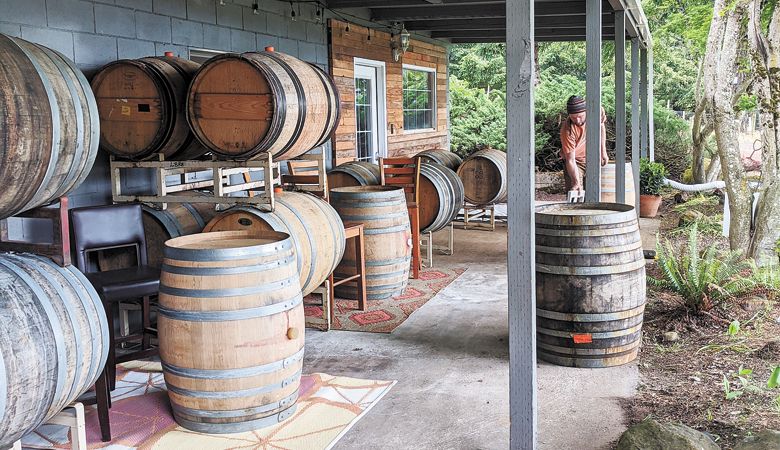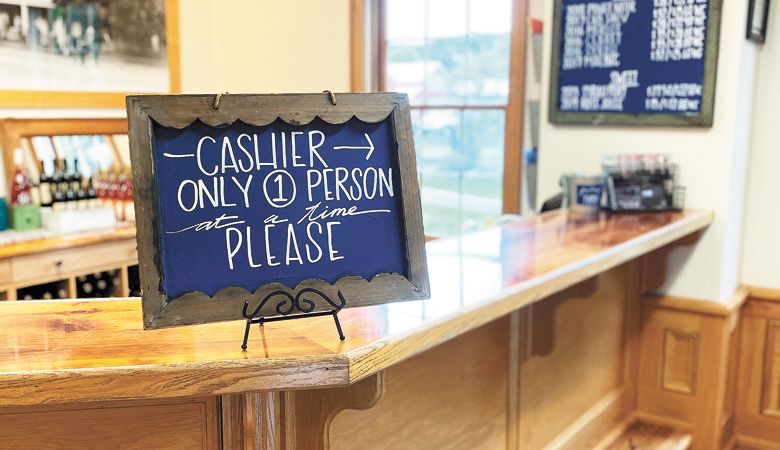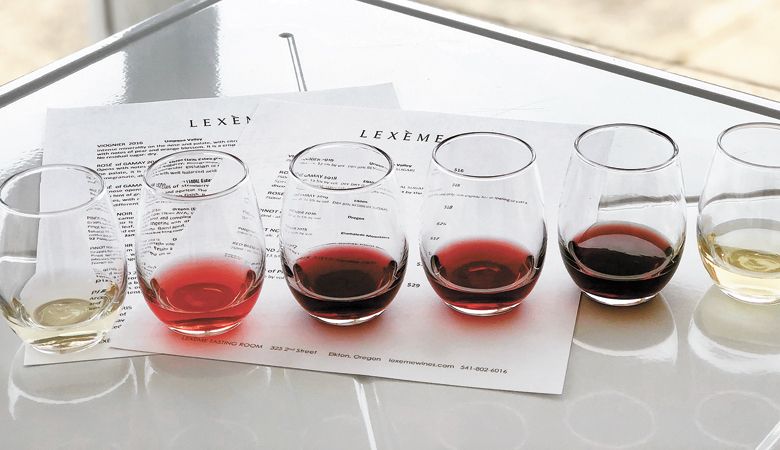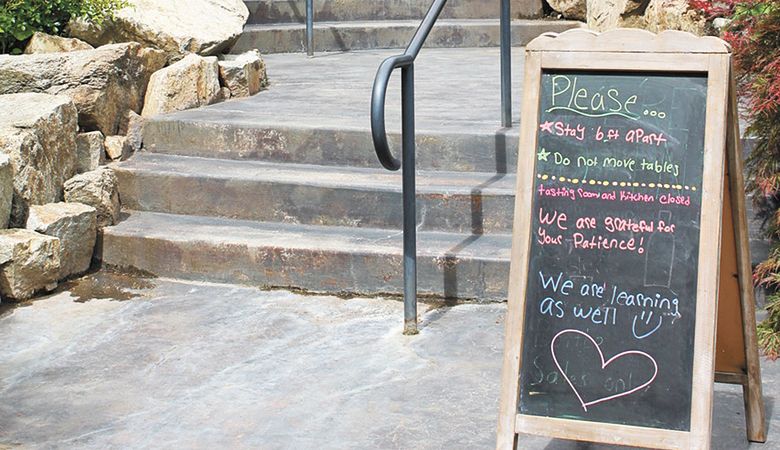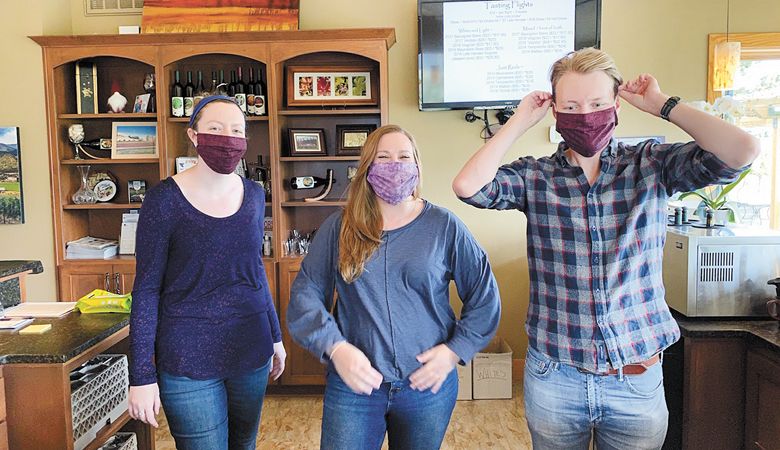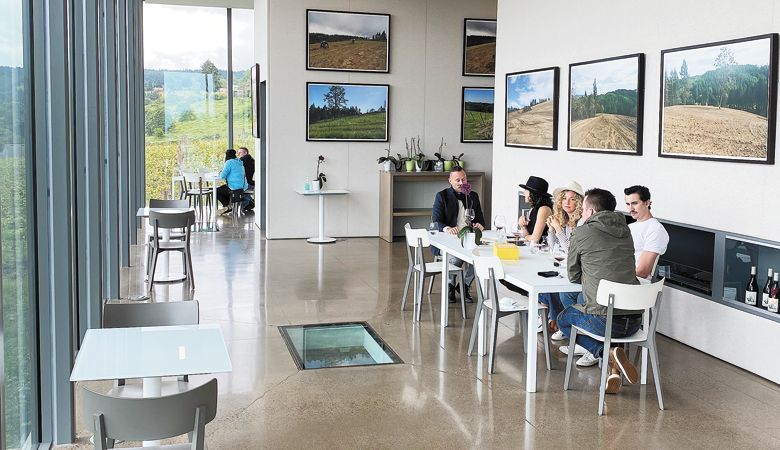Phase 1
Oregon’s tasting rooms reopen slowly, cautiously
By Paul Omundson
Since mid-May, Oregon wineries have joined the rest of the hospitality and leisure industry in a tidal wave of businesses reopening. By the end of this month, most of the state’s 800 wineries with tasting rooms are likely to start serving the public again, in person. When the green light was given May 15, 28 of the state’s 36 counties qualified for Phase 1. That number’s up to 31 now.
So far, it’s been a smooth transition. “We’ve been anticipating this for more than a month,” says Jessica Thomas, general manager of Sweet Cheeks Winery and president of the South Willamette Valley Wineries Association. “We’ve all collectively been discussing a phased reopening and the various scenarios for that. In recent weeks, wineries have put required safeguards in place, practiced protocols diligently and they’re ready to start up again.”
That careful preparation pays off following two months of lockdown.
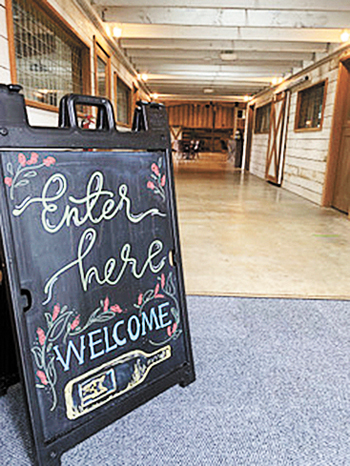
The measured strategy is a testament to Oregon’s two largest wine groups, OWB (Oregon Wine Board) and WVWA (Willamette Valley Wineries Association), and numerous other regional groups, working with local and state officials in creating a definitive, all-encompassing set of tasting room guidelines to protect employees and customers.
Of course, June always welcomes a flurry of summer visitors. If a county experiences a spike in COVID-19 infections, lockdowns are expected to resume, restarting the clock for flattening the curve.
Credit goes to the diligent exchange of information at weekly (Tuesdays, 11 a.m.) virtual updates on the COVID-19 crisis co-hosted by OWB president/CEO Tom Danowski and WVWA executive director Morgen McLaughlin. The two leaders have helped pave the way to a mostly trouble-free restart. The sessions keep wineries and other interested parties informed. The forum has been an important information tool, allowing regional voices to be heard and put into the statewide mix.
Beginning this month, the Zoom-based meetings will change to biweekly, a hopeful sign things are settling into a routine as the rollout continues for the initial reopening. Phase 1 allows for groups of up to 10 visitors to taste at wineries. If all goes well, Phase 2 follows in which gatherings of up to 100 can assemble.
And yet, no blueprint exists for what the future holds in this uncertain environment.
“No one knows where this will go. We’re all speculating,” says Kevin Chambers, owner of Koosah Farm in Amity, OWB vice chairman and president of the Oregon Winegrowers Association. “Grape demand was weak before the pandemic. I know grape contracts will get broken now. And demand is highly selective. There will be business failure. Other than that, I’m guessing like everyone is.”
Speculation remains how successful Oregon wineries will be in re-establishing warm tasting room encounters of the past in this new era of social distancing.
“The first thing some customers do when they visit us is go hug our winemaker,” Thomas says of Sweet Cheeks in Eugene. “That’s going to be hard to replace.”
Visit www.oregonwine.org/visit-wine-country/covid-reopening/ for a current listing of open wineries. Plan a visit. Out-of-state travel here hasn’t picked up yet and local wineries welcome your patronage. Keep in mind this will not be the identical winery experience you remember from before mid-March. It contains the same cast of characters, but in these pandemic times, much has changed.
That masked man is your winemaker
In this new world, spontaneous trips are highly discouraged. Instead, book an appointment. For wineries, the role of gatekeeper is necessary to control visitor flow, maintaining safe distancing levels and crowd sizes.
For most wineries, the bar is being replaced with tableside service. Expect tasting room staff and winemakers to don masks, engaging visitors from six feet, or more, away. Each guest will have his own personal carafe. In the back of the house, there are even more stringent guidelines for employees.
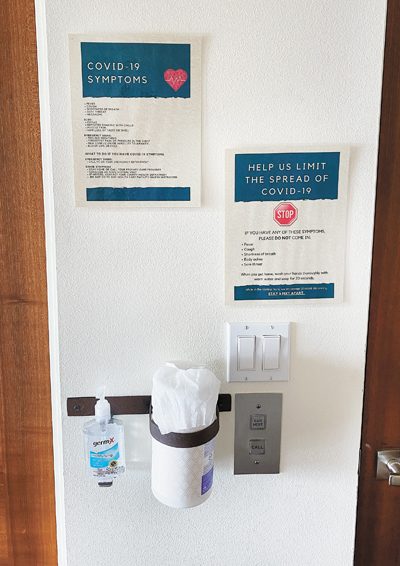
A deepening camaraderie among wine organizations as exemplified by the industry updates is a heartening trend. “I’m really proud of how all the wine industry groups are working together,” Chambers says. “All of us are communicating back and forth, and we’re trying ways to keep going and enable each other to survive.”
Challenges ahead include making up an average 73.15% winery sales drop after the coronavirus shutdown occurred and reversing the 15.4% decline of direct-to-consumer sales in the same time period, according to Winery Survey 11 (Oregon) from the National Association of American Wineries.
Experts foresee a piecemeal reemergence of Oregon’s robust tourism industry, which normally contributes $800 million a year to the economy. The speed of recovery will impact the health of the state’s future wine trade. Meanwhile, local wine enthusiasts may pick up some of the slack from slow-to-return tourists.
Expect more sales and marketing collaborations such as the current Oregon Vine Perks program sponsored by OWB. There will be increased partnerships with fellow wineries, near and far, presenting a variety of promotions. Creative co-ventures with restaurants beckon as well. Interesting times lie ahead.
Wine buyers seem ready to do their part. “Consumers welcome the opportunity now to get back with people who make their wine,” says former OWB chairman Steve Thomson. “They view life as a little bit more precious and valuable, and they celebrate small things (over wine) just a little more than before.”
In these compromised times, Chambers continues moving forward, working his family’s permaculture vineyard, orchard and pasture operation near Amity. During the height of the pandemic, he spent his time adding 16 acres to his blocks of vines, now planted to 44 acres of Pinot Noir and Chardonnay.
“Vines know nothing of COVID-19,” he says.
Making It Safe
Industry members such as Mike McNally, Fairsing Vineyard; Carrie Kalscheuer, A to Z Wineworks and REX HILL; and Dan Marca, DANCIN Vineyards have been part of the governor’s task force to create guidelines for tasting room operations. Here’s the fruit of their labor as posted by the Oregon Wine Board.
Phase 1 Tasting Room Guidelines
Businesses must: 1. Determine maximum occupancy to maintain physical distancing. 2. Guarantee tables are spaced at least six feet apart. 3. Maintain distancing of six feet between parties. 4. Allow at least six feet between people not in the same party. 5. Ensure customers and parties remain at least six feet apart when ordering, waiting for seating or waiting to pay. 6. Limit parties to 10 or fewer people — do not combine parties. 7. Prohibit counter and bar seating; counter ordering is acceptable. 8. Brief interactions closer than six feet are acceptable. 9. Physical distancing applies to indoor and outdoor seating. 10. If six feet can’t be maintained, then implement pickup and to-go service only.
Employee Infection Protection
Businesses must: 1. Require all employees to wear cloth, paper or disposable face coverings. 2. Supply face coverings for employees and reinforce meticulous hand hygiene for all employees. 3. Enforce hand washing or sanitizing (60% alcohol) after handling any items used or touched by customers. 4. Use utensils to minimize bare-hand contact with food. 5. Have employees wear gloves when cleaning, sanitizing or disinfecting; be cautious of cross-contamination. 6. Follow ODA guidance for licensed and non-licensed facilities.


